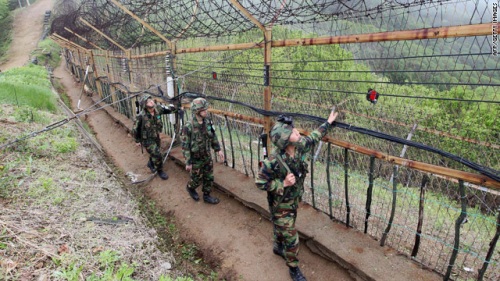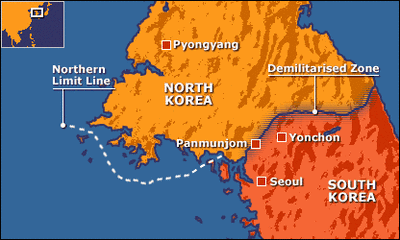While the title might evoke a “Wait, what?” sort of response, Microsoft’s movement-recognition Kinect software has actually proven remarkably effective at guarding the demilitarized zone (DMZ) that separates North and South Korea.

First developed by Ko Jae-Kwan, founder / president of Saewan Co., the software has since been adapted by a South Korean developer and deployed at various points across the 2.5-mile-wide / 155-mile-long piece of land that separates the two companies still technically at war.

The DMZ is a literal no-man’s land, and its years of isolation has resulted in the creation of an accidental wildlife park that’s seen as one of the best-preserved habitats on Earth. The Kinect software aids in the preservation of these animals as it is being used to differentiate animal and human movement within the area.
Ko told the AFP that his device is able to detect sound, movement, and direction of anyone trying to cross the DMZ, and immediately reports this data to South Korean border guards.
“Existing sensors, which had been in place along the border, were highly efficient but could not tell the difference between humans and animals, sending wrong signals frequently,” Ko explained.
The Kinect sensors have been in place at different sections of the border since last August, Ko added.
“Such devices are established as part of our project to strengthen surveillance with scientific equipment, but we cannot provide details for security reasons,” a defense ministry official said on condition of anonymity.
Despite the efforts of the South Koreans to advance the sensor technology covering this area, there are sections that are uncovered, and so undetected crossings are still an issue. Most recently, five South Korean generals and nine mid-level officers were relieved of their posts and disciplined following a 2012 incidence that saw a defecting North Korean soldier walk undetected across the DMZ and knock on the door of a guard post.
To make this incident worse, it came during a period of heightened military tensions, when the South’s military was on high alert.
In his interview, Ko said that he planned on updating the current band of Kinect sensors to a version that can detect heart rates and read body temperature, features already added to the Xbox One version of the console released last year.
“For its price, the device is very accurate and effective in covering vulnerable areas,” he said.
Story via google.com
Advertisement
Learn more about Electronic Products MagazineMicrosoft





